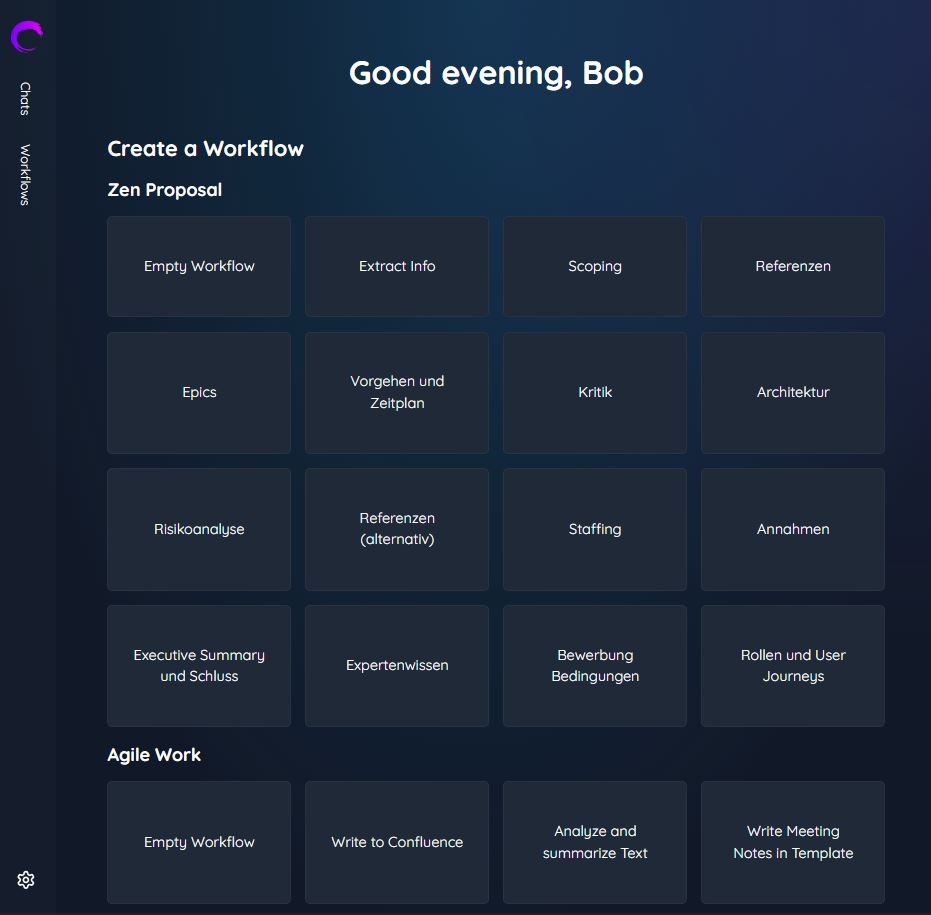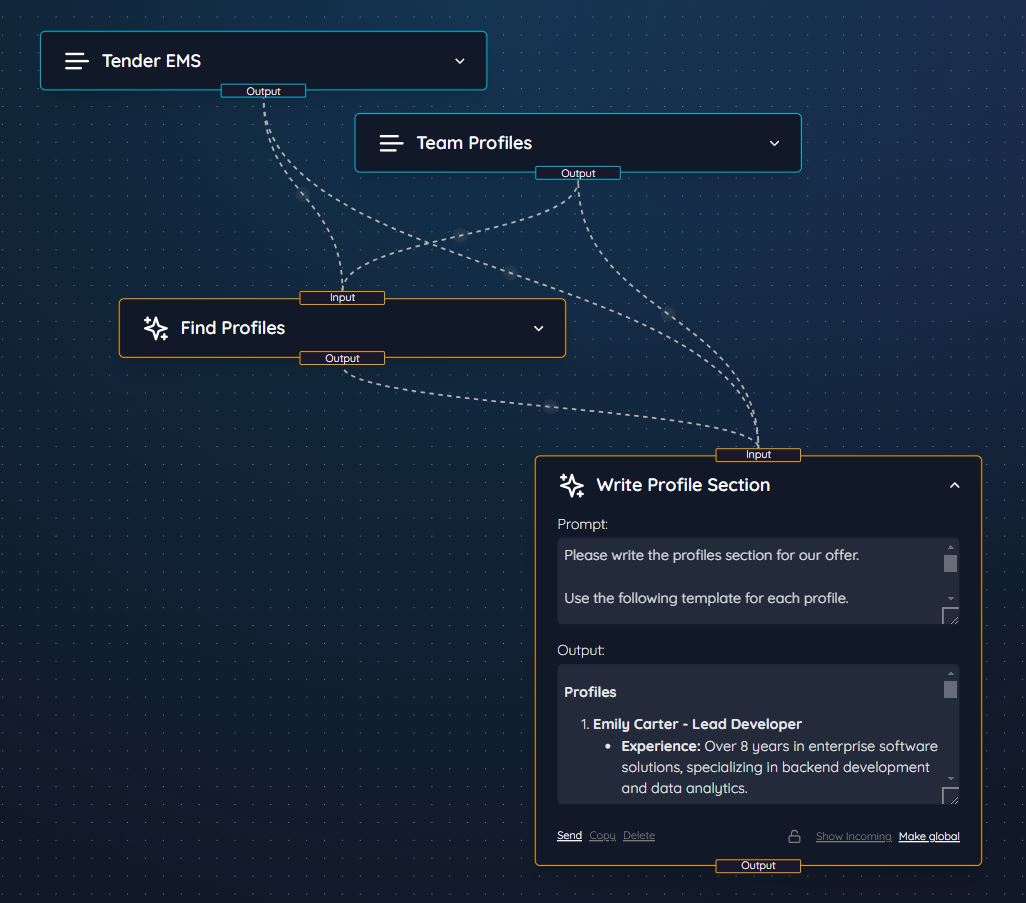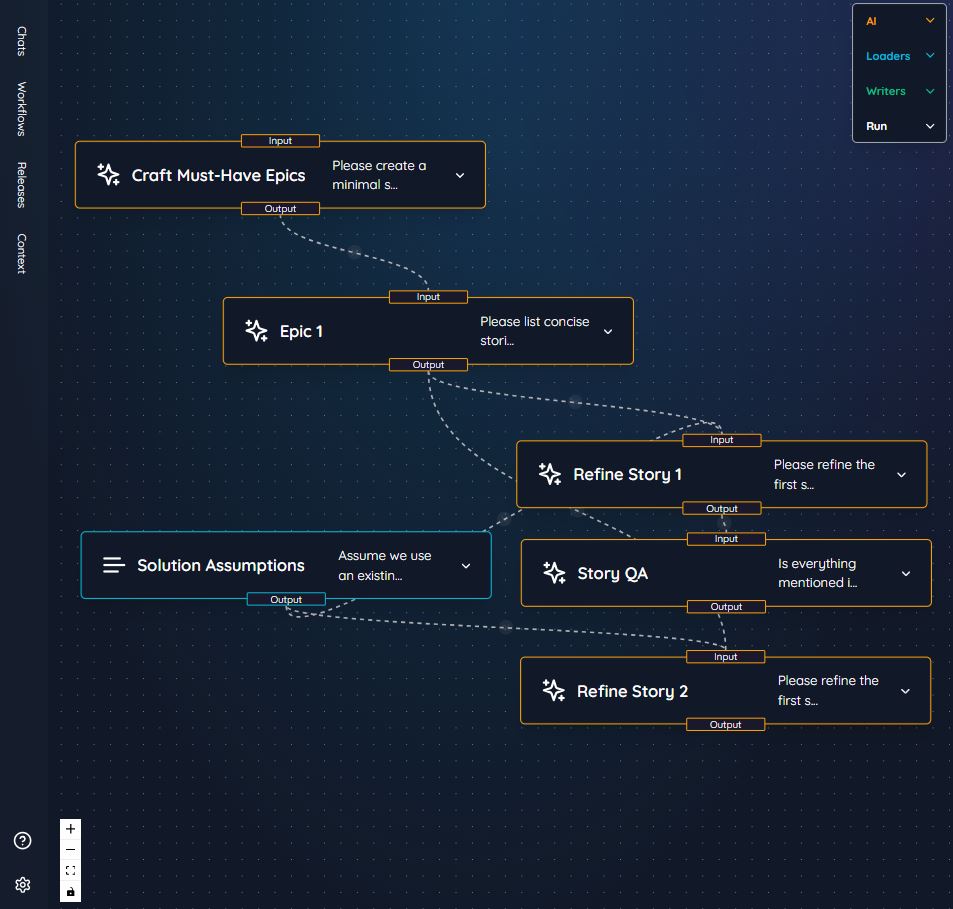Analyze Tender Documents
Overview
This documentation describes a workflow designed to analyze a Request for Proposal (RfP) for an event management system. The workflow extracts essential details from the document using a Large Language Model (LLM). The extracted information includes various key components, such as customer details, technology requirements, and specific requests outlined in the RfP. Below is a detailed description of each node and its purpose within the workflow.

Workflow Structure
The workflow consists of multiple interconnected nodes, each representing a specific category of information to be extracted from the RfP document.
RfP Veranstaltungsmanagement
Description: This is the initial input node where the RfP for the event management system is provided. The node receives the RfP text, which is then processed by subsequent nodes for detailed analysis.
Kunde (Customer)
Input: Takes data from the RfP.
Output: Extracts and displays information related to the customer who is issuing the RfP. This might include the organization’s name, key contacts, and any specific requirements mentioned in the document.
Ansprechpartner (Point of Contact)
Input: Receives processed data from the "Kunde" node.
Output: Extracts details about the point of contact, including name, email, and role, from the RfP document. This node is essential for identifying who to contact for further clarifications.
Angefragte Lösung (Requested Solution)
Input: Receives relevant information from the "Ansprechpartner" node.
Output: This node extracts and provides the solution requirements outlined in the RfP, including technical specifications or features requested by the customer.
Laufzeit und Umfang (Duration and Scope)
Input: Pulls relevant information from the initial RfP input.
Output: Extracts the required project timeline and the scope of work mentioned in the RfP, giving details about deadlines, phases, and deliverables.
Relevante Technologie (Relevant Technology)
Input: Receives data from the "Laufzeit und Umfang" node.
Output: Extracts the technology stack and technical requirements necessary for the proposed solution. This can include platforms, programming languages, tools, and other technical specifications.
Glossar (Glossary)
Input: Pulls all relevant terms and abbreviations from the RfP text.
Output: Provides a glossary of terms that may be unfamiliar or require clarification, ensuring that the terminology used in the RfP is well understood.
Anzahl Nutzer (Number of Users)
Input: Processes data from the "Angefragte Lösung" node.
Output: Extracts information regarding the number of users expected for the solution. In this case, the output states:
"In der Startphase des Veranstaltungsmanagementsystems wird mit einer geschätzten Anzahl von ca. 100-1000 Nutzern gerechnet. Diese Zahl muss bei der Produktnutzung beliebig erweiterbar sein."
Translation: In the initial phase of the event management system, an estimated number of 100 to 1,000 users is expected. This number must be scalable as product usage grows.
Workflow Control
The workflow is controlled by the panel on the right side of the interface, which allows the following actions:
Run Workflow: Executes the entire workflow, extracting data from the provided RfP document.
Open All Nodes: Expands all nodes to show both inputs and outputs at once for easier analysis.
Close All Nodes: Collapses the nodes to focus on a specific section.
Key Features
AI-Powered Extraction: Each node in the workflow uses an LLM (Large Language Model) to extract relevant information from the RfP document based on predefined prompts.
Scalability: The workflow is modular and can be adjusted to include additional nodes depending on the complexity of the RfP or the scope of the project.
Conclusion
This workflow provides a structured and efficient approach to analyzing RfP documents for event management systems. By using an LLM, it automates the extraction of key details, enabling quick and accurate insights that can aid decision-making and proposal development. Each node in the workflow represents a distinct area of information, and together they provide a comprehensive breakdown of the RfP’s requirements.



